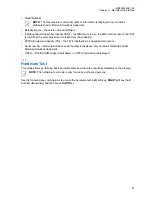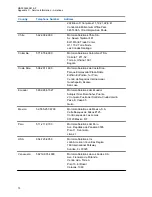
See also:
Local Site Trunking (LST)
When a
system fails or many of the sites lose connection
to the Central Network Equipment (CNE), the
sites are designed to go into a fall back situation
known as Local Site Trunking (LST). When the
sites are forced to go into LST, the radios (users)
are randomly distributed across all the sites and
communication between radios is dependent on
at which site they are registered. Only radios
registered at a particular site can communicate
to each other.
Location Request/Response Protocol
(LRRP)
This protocol allows for a single and
efficient format of passing location information
(requests and responses).
Main Control Channel (MCCH)
The main
control channel at a site. The channel is used by
radios to register on the system and to request
and setup speech calls with other radios.
See also:
Man Machine Interface (MMI)
Man
Machine Interface commands are the input from
a service computer entered to communicate with
the Site Controller at the system level.
Mobile Country Code (MCC)
The Mobile
Country Code and Mobile Network Code
together form a unique TETRA system identifier
that is broadcast by a Dimetra system over the
air interface.
See also:
Mobile Link Entity (MLE)
Responsible for
the control of lower layer radio functions.
See also:
Mobile Network Code (MNC)
The
Mobile Network Code should be allocated by
the national authority that allocates frequency
assignments in a country and should be
requested from that authority at the same time
as frequency allocations are requested. The
Mobile Country Code and Mobile Network Code
together form a unique TETRA system identifier
that is broadcast by a Dimetra system over the
air interface.
Modified Group Cipher Key (MGCK)
Used to encrypt group addressed downlink
signaling.
See also:
Multigroup
Two or more talkgroups that
are combined into a permanent multigroup in
trunked systems. Calls to the multigroup reach
all members of the talkgroups that comprise the
multigroup.
See also:
Over-The-Air-Rekeying Protocol
(OTAR)
Used in connection with Air Interface
Encryption.
See also:
PABX Gateway
A device that provides
connectivity from a TETRA user to a PABX
subscriber and the other way around.
See also:
Permanent Disable Version 2 (PDV2)
You can restore a disabled radio using CPS
Plus.
Private Automatic Branch Exchange
(PABX)
A telephone switch that is operated
privately within a confined setting, instead of
publicly. Most large offices have a PBX to handle
intraoffice calls and to connect calls to and from
the Public Switched Telephone Network (PSTN).
See also:
Private Call
An individual call between two
radios or between a radio and a console
operator. Apart from the two interlocutors, no one
else can participate or listen to the call.
Private Duplex Call
A private call
between two radios that resembles a telephone
conversation. The two individuals can talk and
listen at the same time without pressing PTT.
See also:
Private Number
Also called Private ID.
PSTN Gateway
A device that provides
connectivity from a TETRA user to a
PSTN subscriber and the other way around.
Additionally, for the duration of the call,
the PSTN gateway allows TETRA signaling
MN003465A01-AF
Local Site Trunking
73



































